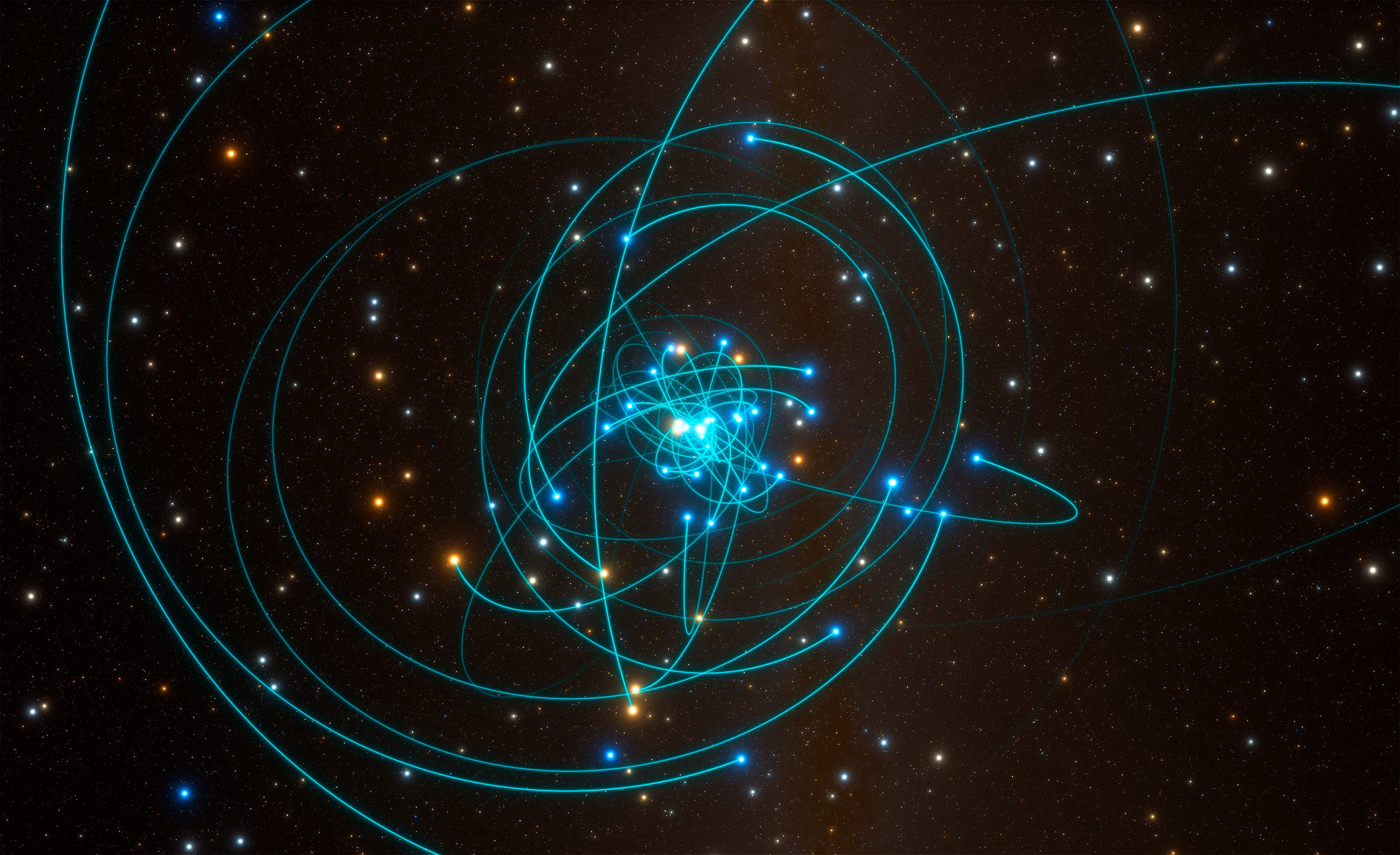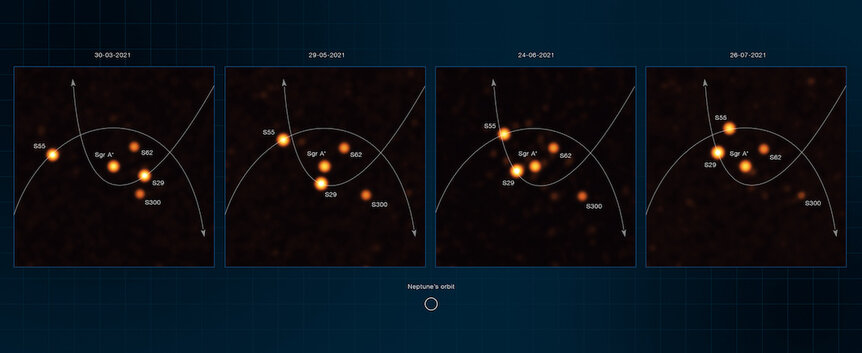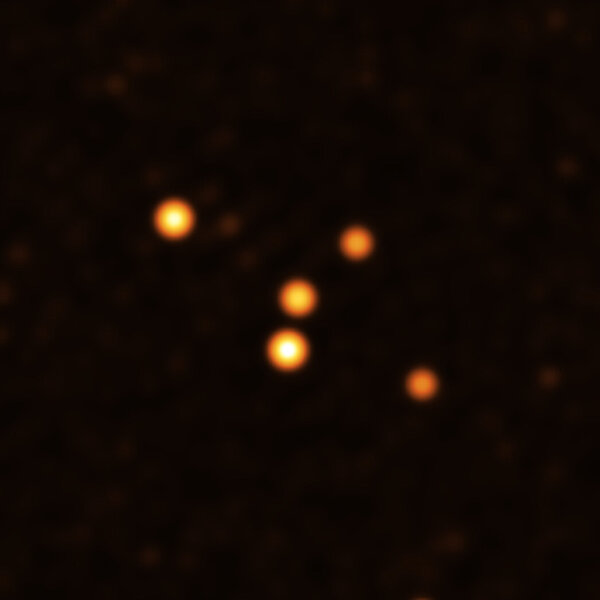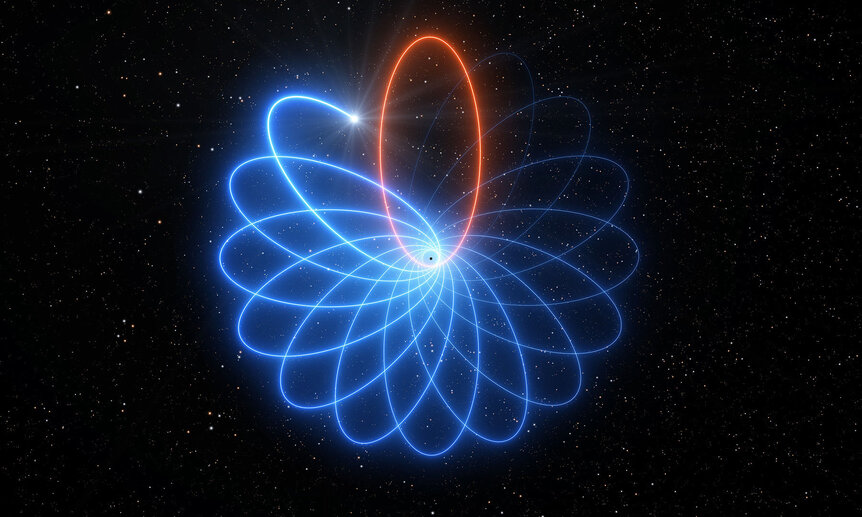Create a free profile to get unlimited access to exclusive videos, sweepstakes, and more!
Amazing new images show stars flung around by the Milky Way's enormous central black hole
Watch stars move under the influence of a supermassive black hole.

Astronomers have incredible new images of the stars flying past our Milky Way galaxy's central supermassive black hole, using them to get the most accurate assessment of its mass: a whopping 4.3 million times that of the Sun.
We think every big galaxy has a supermassive black hole in its center, ranging from millions to billion of times the mass of the Sun. Observing the one in the center of the Milky Way, called Sgr A*, is difficult due to the large amount of dust in our galaxy. Infrared light gets through it, though, so we can use telescopes and cameras designed to see that light to observe the black hole.
Sgr A* has some material around it that glows in the infrared. It also has a cluster of massive stars, called the S Cluster, surrounding it. These stars are bright enough to see using big 'scopes, and in fact have been observed for many years. Over that time, the stars move visibly in their orbits around Sgr A*, which in itself is awe-inspiring. The orbits of objects depend on the mass of and distance to the object they're orbiting, so by tracking the S stars' movements the mass of the black hole can be found.
A team of astronomers, called the GRAVITY Collaboration, has come up with a new technique to observe the stars more accurately, and tested it on observations made in spring and summer of 2021. They saw quite a few stars close in to the black hole, and for two in particular were able to track their motions with amazing accuracy.
Watch:
That video is made of actual observations of the stars, and you can see them moving! The two stars, S29 and S55, both made their closest approach to Sgr A* in 2021, and that means their motion is maximized. In particular, S29 was seen to get within 13 billion kilometers of the black hole — only about 90 times the Earth-Sun distance — and screamed past it at a whopping 31 million kilometers per hour! That's fast enough to cross the continental United States in about 0.6 seconds, or to get from the Earth to the Moon in 45 seconds.
That's fast. And it's an entire star getting tossed around that way. The gravity of the black hole is immense.
They also saw another star, S62, slowly approaching the black hole. Previous observations indicated it might have a 9.9-year orbit, but the new, higher resolution observations preclude that; it's not moving rapidly enough. The astronomers discovered another star, S300, which is moving away from the black hole rapidly as well.
Using all this data, they were able to determine the mass of the black hole to higher precision than even before: 4.297 million solar masses, with an accuracy of about ±0.25%. They also were able to calculate a distance to it — and therefore from the Earth to the very center of the galaxy — of 26,983 ±29 light years, which matches decently well with earlier measurements.
They could also show that all that mass was very concentrated, within about 18 billion kilometers of the position of Sgr A*. If that mass were made up of millions stars, then they'd be extremely bright — and very crowded; that's only about 4 times the distance of Neptune from the Sun — but nothing is seen. What can be that massive yet not shine? A black hole.
I mean, we knew it was there, but it's nice to see the data clinch that. Again.
The team published two papers about this; one about the techniques they used and the other on the observational results. The observations were made using a camera called GRAVITY on the Very Large Telescope (VLT) in Chile. The VLT is actually four mammoth 'scopes, set some distance apart. By combining their observations using a technique called interferometry, it's as if you're using a single telescope 130 or so meters in size, providing images with 20 times better resolution than a single telescope can make. That allowed the astronomers to nail down the positions of the stars with phenomenal accuracy.
How precise? Well, as measured as an angle seen from Earth, both stars S29 and S55 passed less than 50 milliarcseconds from the black hole, a very small distance. That translates to the apparent size of a quarter seen from 100 kilometers away. But the accuracy they could measure the actual positions of the stars was more like 0.1 milliarcseconds, which would be like resolving two quarters edge-to-edge from a distance of 55,000 km. That's 1/7th the distance to the Moon. Holy wow.
They created sophisticated techniques to clean the images and used Bayesian statistics to better understand where the stars are located in detail — they used models of where the stars are in space, simulated what they would look like through the telescope, then compared them statistically with actual observations. The biggest hurdle here is that the material around the black hole emits light in unpredictable ways on timescales of just a few minutes. This confused the statistics a bit; sometimes it thought there was a single source there when it was bright, or multiple sources when the black hole was fainter and the stars around it more visible.
These cleaner observations tell us more than just the basics of the black hole, too. General Relativity predicts that the as a star passes close to the black hole there are some effects that can subtly change the orientation of the star's orbit, and the new observations confirmed this is true for the star S2, which passed near the black hole in May 2018.
Not only that, but if the black hole is spinning rapidly it can literally drag the fabric of spacetime around with it. If a star gets close enough that effect can potentially be measured, and the spin of Sgr A* determined. None has been seen yet, but the astronomers are hoping future observations will pay off with one.
I have been an astronomer for many decades, and I am in awe of these observations. They're extraordinarily difficult to obtain, process, and analyze, but the results are astonishing and far better than what could've been done a couple of decades ago when astronomers first started peering closely at the galactic center. That's due to better technology, of course, but also advances in techniques in examining them. This shows what can be done, and gives us a good taste of what will be done in the near future.





























